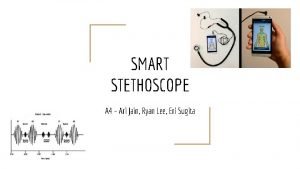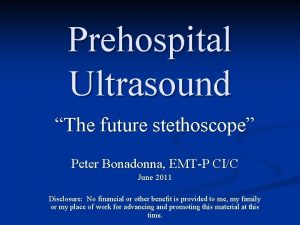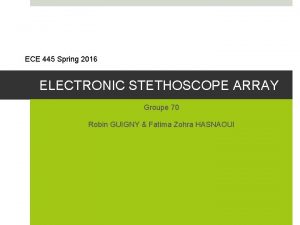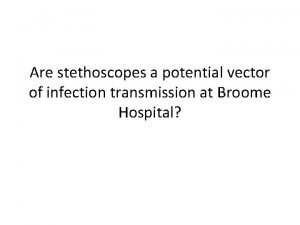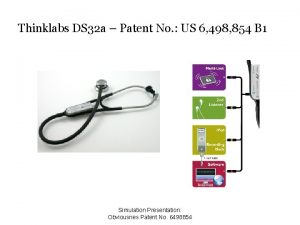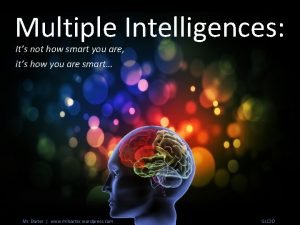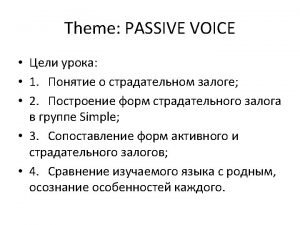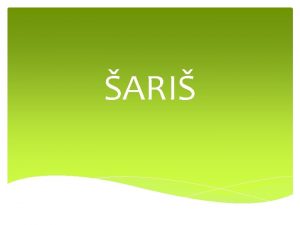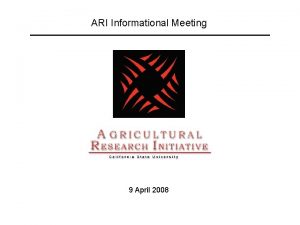SMART STETHOSCOPE A 4 Ari Jain Ryan Lee












- Slides: 12

SMART STETHOSCOPE A 4 - Ari Jain, Ryan Lee, Eri Sugita

Use Case Problem: Cardiologists using physical exams only caught 47% of abnormal heart sounds ● 2014 study in JACC Cardiovascular Imaging Primary Actor: Medical staff and assistants (e. g. cardiologist, paramedics, medical assistants, physician assistants)

Use Case Main Success Scenario: 1. User places stethoscope on patient’s heart 2. Patient’s heart sound waveform is continually collected and shown on the user’s computer 3. The system segments 5 full ‘lub’ ‘dub’ sounds 4. The system filters the heart sound to match that of the dataset we trained on 5. ML analysis will classify the patient’s heart sound as normal/abnormal 6. Indicator light on the computer will show up green for a normal heart and red for an abnormal heart Covered areas: ● Hardware, Signal Processing, Software, ML, Circuits

Requirements A stethoscope modified with a microphone sensor Sends data to a computer/phone using 3. 5 mm cable Analyze the heart sound on external server using ML to detect any abnormalities with at least 85% accuracy Add a LED to the stethoscope to indicate green for normal heart sound and red for abnormal heart sound UI on the computer/phone to show heartbeat wave and other data

Technical Challenges Ability to gather heart sound data from the patient with minimal noise electronically Create front end software to display the patient’s heartbeat as well as analysis of it on a phone/computer Developing a ML algorithm that accurately determines whether a given heart sound is normal/abnormal. Aim to be better than a doctor (85% according to research) Demonstrate that the stethoscope correctly works

Solution Approach Stethoscope Sensor (Mic) Earpiece 3. 5 mm cable Light Indicator Phone/Computer External Server for Analysis

Testing, Verification and Metrics ● ● ● Step 1: Test ML algorithms first on a public dataset to verify that it classifies accurately Dataset > 800 useful datas with both normal and abnormal heart sounds with various levels of noise. ○ Peter J. Bentley Heart Challenge dataset (http: //www. peterjbentley. com/heartchallenge/) Dataset is split into 4: 1 training data, 1 validation data, 2 testing data

Testing, Verification and Metrics ● ● Step 2: Test segmentation algorithm of finding 5 consecutive ‘lub’ ‘dub’ beats ○ Segment must begin on the first ‘lub’ received and end on the 5 th ‘dub’ received ○ Metric goal: 100% accuracy Step 3: Test ML algorithms/filtering on data received from the electronic stethoscope ○ Test on the synthetic heart speaker to test on abnormal heart sounds ○ Modify filtering if the classification is not accurate ○ Metric goal: > 85% accuracy

Tasks and Division of Labor - Stethoscope (Ari) ● ● ● ● Design stethoscope hardware Order parts Build physical stethoscope ○ Connect microphone, earpiece, and transmission cable Receive signal on phone/computer and transmit to external server for data processing Test indicator light Test signal quality Test robustness

Tasks and Division of Labor - Data Processing, Classification, and Segmentation (Ryan & Eri) ● ● ● Receive signal from stethoscope Segment 5 full ‘lub’ ‘dub’ beats collected from stethoscope Filter the heart sound to match that of the dataset we aim to train our algorithm on Develop an algorithm that trains the stethoscope to classify a heart sound ○ First, classify as a normal/abnormal heart sound ○ Next, classify abnormal sounds as Aortic Regurgitation (AR), Aortic Stenosis (AS), Mitral Regurgitation (MR), Mitral Stenosis (MS) Test stethoscope on the synthetic heart speaker and verify it reaches the desired accuracy

Tasks and Division of Labor - Software (All) ● ● ● Build external server to receive data Put processing algorithm on server Make a web/mobile app for viewing data in more detail as well as sending data to our processing algorithm Test web/mobile application Test everything all together on ourselves and ballistic gel dummy with speaker

Schedule https: //docs. google. com/spreadsheets/d/1 PRCph. QJJN 5 v. HCl 8 g. ASBj. Hp. MXF _1_KJm. HZ 78 V 9 qmw_b. A/edit? usp=sharing
 Earpiece
Earpiece Que es tero en guaraní
Que es tero en guaraní Best prehospital stethoscope
Best prehospital stethoscope Medical term for listening with a stethoscope
Medical term for listening with a stethoscope Robin guigny
Robin guigny Peralatan semi kritikal adalah
Peralatan semi kritikal adalah Stethoscopes hospital hill
Stethoscopes hospital hill Thinklabs ds32a digital stethoscope
Thinklabs ds32a digital stethoscope Street smart vs book smart quotes
Street smart vs book smart quotes Investing in you future smart answers
Investing in you future smart answers Book smarts vs street smarts
Book smarts vs street smarts Eight types of intelligence
Eight types of intelligence One smart man he felt smart
One smart man he felt smart
